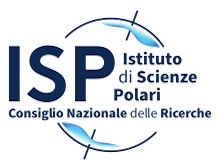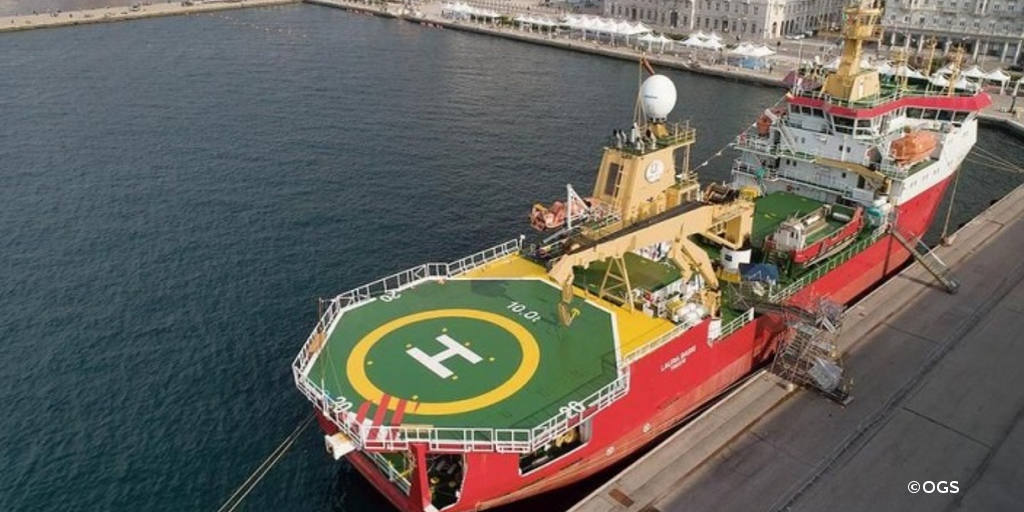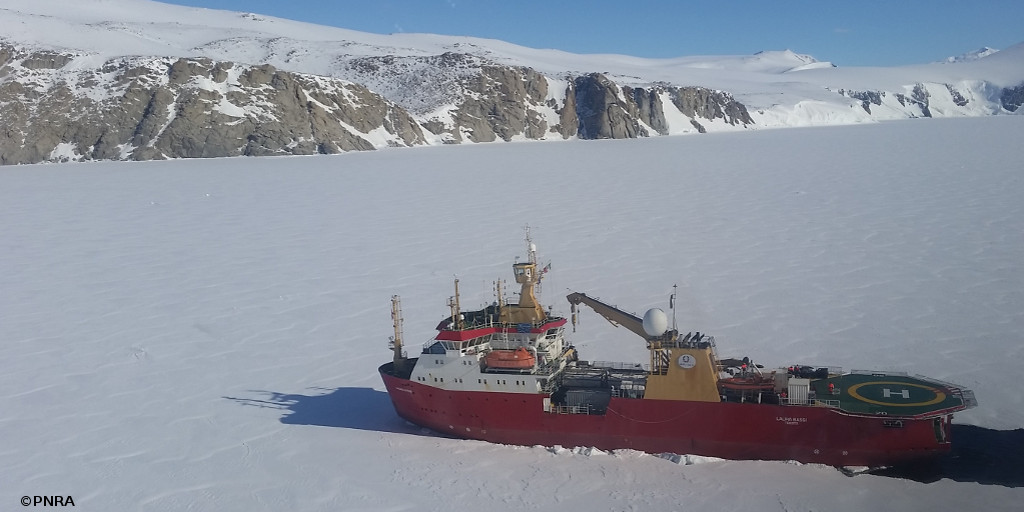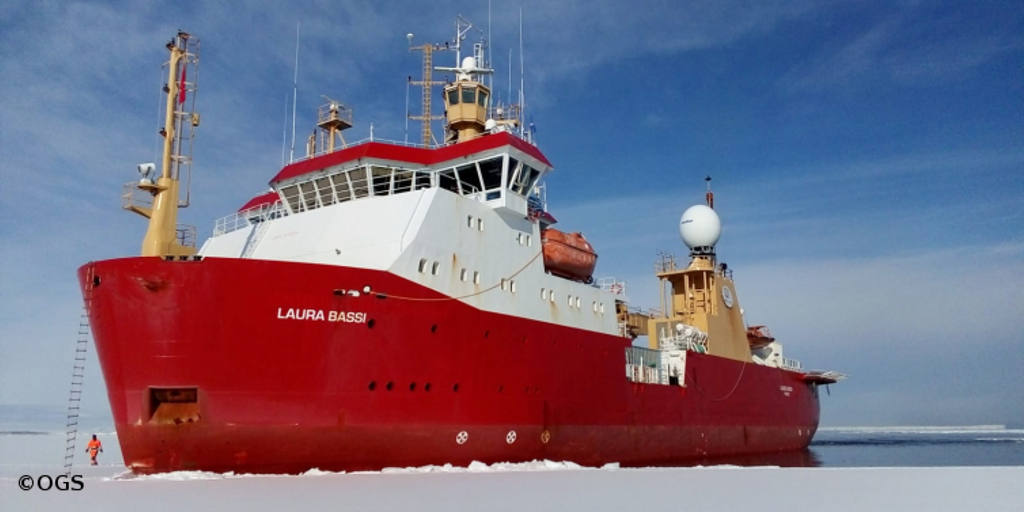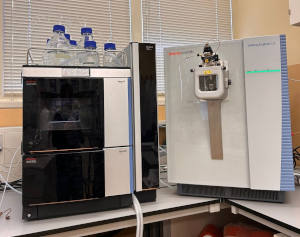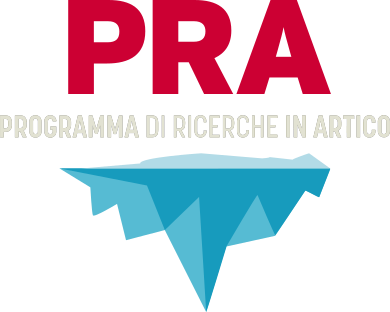Infrastructures
The BSRN was created to improve the quality of measurements of the Earth-atmosphere radiative fluxes that determine the thermal conditions and circulation of the atmosphere and the ocean. The ISP manages this observatory at the Italian-French Concordia station in Antarctica. Installed in 2006, the BSRN was funded by the PNRA and consists of a series of passive instruments (radiometers and photometers) that measure different components of the radiation balance (both in the solar and infrared spectrum), including the surface albedo.
In addition to these measurements, during the austral summer, the columnar content of aerosols is also measured by means of an SP02sun photometer, and the ultraviolet radiation spectrum by a UV-RAD radiometer, from which it is possible to obtain the ozone concentration, along the entire atmospheric column. Other measurements that are carried out as part of the observatory's activities are in collaboration with the Finnish Meteorological Institute (FMI) and concern the physical and optical properties of atmospheric particulate matter at ground level: its diffusion, absorption coefficients and dimensional distribution.
In 2019, thanks to a dedicated funding program by the Ministry of University and Research (MUR), Italy acquired a research ship with ice-breaking capabilities to conduct research activities in the polar regions. The research vessel was named after Laura Bassi, the first woman in the world to obtain an official academic professorship, and she did this at the University of Bologna in the 18th century.
The vessel is owned by the National Institute of Oceanography and Applied Geophysics (OGS) in Trieste and receives funds to conduct research activities from the National Research Program in Antarctica (PNRA). It also serves the polar scientific community thanks to an agreement between the major Research Institutes in Italy working in the polar regions and those managing the polar infrastructures (OGS, CNR and ENEA). The use of the R/V Laura Bassi has also been included in the strategic planning of the Italian Arctic Research Program (PRA).
The R/V Laura Bassi made its first expedition to the Ross Sea (Antarctica) in the austral summer of 2019-2020.
An extensive instrumental upgrade to the vessel is currently underway, with the contribution of the ISP staff, to convert it into a modern multipurpose scientific platform that can serve different scientific communities working on various research fields, including physical, chemical and biological oceanography, paleoceanography, geophysics, marine geology and atmospheric physics and chemistry.
For more information please refer to the OGS website.
Mario Zucchelli Station (MZS) is located at 74° 41′ S, 164° 6′ E, sitting on a granite promontory in Terra Nova Bay (Ross Sea - Antarctica) at 15 m above sea level.
The station was named in memory of Eng. Mario Zucchelli who coordinated the ENEA Unit for Antarctica (ENEA-UTA) for sixteen years. MZS has been operating since 1985 during the austral summer and supports all the research activities planned by the National Research Program in Antarctica (PNRA).
For more information refer to the www.pnra.aq website.
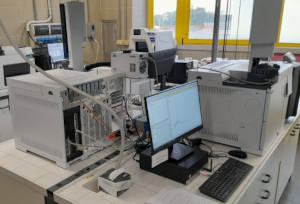 In the Organic Geochemistry Laboratory at the Institute of Polar Sciences in Bologna, researchers and students deal with modern processes and paleo reconstructions by coupling the information provided by fossil biomarkers and stable carbon and nitrogen isotopes. Biomarkers and stable isotopes are geochemical proxies used to investigate the feedback mechanisms between the Earth climate and the biogeochemical cycles. The laboratory is equipped with various instruments to extract, purify and analyze a suite of different biomarkers, including terrestrial compounds (e.g. lignin phenols, aliphatic chain lipids, cutin-derived products) to understand land-ocean carbon exchange (e.g. permafrost thawing, river floods, etc.), alkenones for paleo-temperature reconstructions and highly branched isoprenoids for sea ice reconstructions. In addition, the laboratory is equipped with a Preparative Fraction Collector (Agilent-Gerstel) for the collection of individual compounds. This technique is especially useful for the radiocarbon analysis of biomarkers and can be very useful to derive an age model for the sedimentary archives and to investigate the processes related to permafrost thawing.
In the Organic Geochemistry Laboratory at the Institute of Polar Sciences in Bologna, researchers and students deal with modern processes and paleo reconstructions by coupling the information provided by fossil biomarkers and stable carbon and nitrogen isotopes. Biomarkers and stable isotopes are geochemical proxies used to investigate the feedback mechanisms between the Earth climate and the biogeochemical cycles. The laboratory is equipped with various instruments to extract, purify and analyze a suite of different biomarkers, including terrestrial compounds (e.g. lignin phenols, aliphatic chain lipids, cutin-derived products) to understand land-ocean carbon exchange (e.g. permafrost thawing, river floods, etc.), alkenones for paleo-temperature reconstructions and highly branched isoprenoids for sea ice reconstructions. In addition, the laboratory is equipped with a Preparative Fraction Collector (Agilent-Gerstel) for the collection of individual compounds. This technique is especially useful for the radiocarbon analysis of biomarkers and can be very useful to derive an age model for the sedimentary archives and to investigate the processes related to permafrost thawing.
Facilities
The Organic Geochemistry Laboratory is equipped with several gas chromatographers and mass spectrometers for the analysis of carbon and nitrogen stable isotopes, measurement of carbon, hydrogen, nitrogen and sulphur content in organic matter and the extraction/quantification of organic biomarkers. The analytical facilities include:
- Thermo Fisher Scientific FLASH 2000 Element Analyzer coupled with a mass spectrometer DeltaQ (EA-IRMS)
- GC Agilent GC 7820-MSD EI 5977B
- GC Agilent 8860-FID G2790A
- GC Agilent 8890 equipped by a Gerstel Preparative Fraction Collector (PFC)
For more information: Dr Tommaso Tesi - tommaso.tesi AT cnr.it
The Gruvebadet atmospheric laboratory is located about one kilometre south of Ny-Ålesund and is dedicated to the study of the atmospheric composition and more particularly that of the aerosol. The laboratory was opened in 2010 by the CNR in the building that once housed the Ny-Ålesund miners' showers (Gruve = mine, badet = bathroom in Norwegian).
The laboratory is equipped to house a large number of instruments dedicated to the study of aerosol. There is an accessible roof for the installation of both sampling heads and actual samplers, as well as a series of "passages" for the sampling tubes between the interior of the laboratory and the roof.
The laboratory is managed by the CNR in collaboration with numerous Italian universities: Florence, Perugia, Venice, Turin etc.
The main measurements made in the laboratory are:
- the chemical characterization (organic component and metals) of size segregated atmospheric particulate ;
- measurement of the size distribution of aerosols and their diffusion and radiation absorption properties ;
- the measurement of the carbon component of particulate matter (EC / OC);
- study of new particle formation processes and their ability to form clouds.
In recent years, atmospheric activities have been accompanied by studies of the surface snowpack. The interaction between the atmosphere and snow is one of the topics that most needs to be explored as, for example, the deposition of particulate matter on the snow can accelerate its melting.
The laboratory has attracted more and more interest from foreign researchers; to date, there are numerous active international collaborations on these topics with KOPRI, NPI, the University of Helsinki etc and others.
Gruvebadet - Aerosol laboratory on the website: artico.cnr.it
Concordia Station (75°06’ S, 123°21’ E) is located on the Antarctic plateau at Dome C, which is 3,233 m above sea level and over 1000 km from the coast.
Construction of the station, supported by an intergovernmental agreement between Italy and France and the result of the collaboration between the PNRA and the French Polar Institute Paul Émile Victor (IPEV), was completed in 2005. Since then, Concordia is a permanent station jointly managed by PNRA and IPEV as part of their respective polar programs. For more information, visit the website www.pnra.aq.
Dirigibile Italia is one of the multidisciplinary research stations managed by the CNR, providing support to numerous national and international research projects. The station, inaugurated in 1997, is located in the village of Ny-Ålesund (78°55' N, 11°56' E), on Spitsbergen Island, in the Svalbard archipelago. It is from there that the polar expedition of the General Umberto Nobile set off in 1928, and the station is named in its honour. The Department of Earth System Sciences and Technologies for the Environment (DSSTTA) of the CNR managed the station in the past, but is has now been assigned to the Institute of Polar Sciences (July 2020).
The station participates in the INTERACT and SIOS access programs, making its spaces and means available to countries that do not have access to the Arctic so they can carry out research projects.
It is also included in the Forum of Arctic Operators FARO, a country membership organization that promotes dialogue on logistics and operational support for scientific research in the Arctic.
Dirigibile Italia is a 323 m2 structure, 170 of which are used as laboratories and offices; it can accommodate up to 7 people.
The base is open throughout the year to provide support to research activities.
Among the services that the base provides are:
• 6 beds for staff;
• a chemistry laboratory equipped with a laminar flow hood and an extraction hood, a precision balance, ultrapure water dispenser, freezer and more;
• other workspaces;
• an equipped electronics and mechanics laboratory;
• an internal warehouse space for storing material;
• 3 snowmobiles for winter and spring shifts, equipped with trolleys for transporting material, as well as the necessary suits, boots and helmets;
• 3 fat-bikes with trolley for summer shifts;
• 5 VHF radios for communication between people in the field and for their safety.
- Contact: stationleader.arctic AT cnr.it
- Station Welcome page
- Facebook page of the Research Station
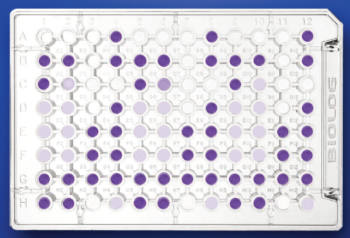
Brief description
The experimental activities carried out at the BioChem Lab in Rome are focused on the study of the effects of legacy and emerging organic micropollutants on organisms belonging to different levels of the trophic web (from microbial communities to higher organisms) in the context of ongoing climate change. The analytical determinations on the biota are aimed at evaluating bioaccumulation and biomagnification processes of target pollutants. Other studies performed at the BioChem Lab focus on:
- The degradation rates (evaluation of the half-life time - DT50 - and determination of metabolites or transformation products of target compounds) of the organic contaminants by setting up laboratory-scale experiments.
- Evaluate the effects of organic micropollutants on specific target organisms (e.g. avoidance behaviour test in Eisenia foetida) and on the structure (PhosphoLipid Fatty Acid analysis-PLFA) and function (Community Level Physiological Profile - CLPP) of autochthonous microbial communities, through the preparation of laboratory-scale experiments and environmental monitoring.
- Investigate the occurrence and diffusion of antibiotic resistance genes (ARGs) and the intI1 gene which is an anthropogenic impact proxy, among natural microbial communities related to the presence of antibiotics in environmental matrices.
Environmental compartments
The bioaccumulation/biomagnification studies of organic micropollutants involve biota such as fish, molluscs, terrestrial and aquatic earthworms and terrestrial and aquatic plant species. The studies on persistence and effects of pollutants on natural microbial communities are related to different environmental compartments such as surface waters and sediments (seas, rivers, lakes), snow/ice and soils.
Analytical techniques
Studies on bioaccumulation/biomagnification/persistence of organic contaminants are performed by a combination of:
- Pre-treatment methods (e.g. freeze-drying, filtration, etc.).
- Extraction/Clean-up methods (solid-phase extraction-SPE, pressurized liquid extraction-PLE, liquid-liquid extraction-LL).
- Sensitive and selective analytical methods based on the coupling of chromatographic techniques (HPLC or GC) and fluorescence, FID-ECD, and mass spectrometric (MS) detection.
- The avoidance behaviour test is based on the exposure of organisms, specifically earthworms belonging to the Eisenia foetida species, to different sub-lethal concentrations of organic contaminants, to evaluate their escape/avoidance behaviour in the contaminated area.
- The evaluation of the composition of natural microbial communities is carried out by PLFA (PhosphoLipid Fatty Acid) profiling. This biochemical technique includes the extraction of fatty acids from microbial membrane phospholipids in the environmental matrix and a methylation reaction followed by separation and analysis with gas chromatography.
- The analysis of microbial diversity at a functional level is performed by the determination of the metabolic/physiological profile (CLPP). This physiological assay involves the incubation of the environmental sample in specific plates and spectrophotometric measurements at fixed times.
- The analysis of ARGs and intI1 gene is performed by DNA extraction from the environmental samples by using specific kits and subsequent analysis by qPCR.
Equipment
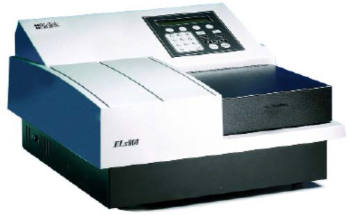 The BioChem Lab is equipped with the following analytical tools:
The BioChem Lab is equipped with the following analytical tools:
Benchtop lyophilizer (freeze-dryer LABCONCO) 2.5 L capacity, equipped with a touchscreen display, for the pre-treatment of solid matrices subsequently extracted with PLE.
Solid Phase Extraction (SPE):12 inlets of the solid phase extractor are connected to cartridges packed with specific adsorbents for the extraction of target compounds from liquid matrices through a vacuum system.
Syncore® Analyst (Buchi) for the simultaneous pre-concentration of liquid phase samples.
Rotavapor R 100 (Buchi), equipped with an electronic interface to control the vacuum system and the recirculating chiller.
Gas Chromatograph (Perkin Elmer, Clarus 480) coupled to a FID-ECD detector (Flame Ionization Detector- Electron Capture Detector). The instrument is connected to an autosampler (Autosystem, Perkin Elmer) and is controlled by TotalChrom Software.
Gas chromatograph (Thermo Fisher, Trace 3000) coupled to a mass spectrometry (MS) detector (Thermo Fisher, ISQ7000). The device is connected to an autosampler (Thermo Fisher. AI 1310) and is controlled by a Chromeleon software.
HPLC (quaternary pump, column Oven mod. LC-100 and Micro Pump Series 200, Perkin Elmer, USA) coupled to a fluorescence detector (Perkin Elmer Series 200a). The device is controlled by Chromeleon Software.
HPLC (binary pump, Vanquish TM Core HPLC system, Thermo Scientific TM, Italy) coupled to a high-resolution mass spectrometer (Orbitrap Exploris 120, Thermo Scientific TM, Italy). The device is controlled by XcaliburSoftware (version 5.1).
Spectrophotometer (Biolog Microstation System, Biolog Inc.) for the reading of microplates (96 positions). This instrument is controlled by specific software.
Contact person: Dr. Luisa Patrolecco – luisa.patrolecco AT cnr.it
Brief description
The experimental activities carried out at the MicroChem Lab in Rome focus on the analytical determination of legacy and emerging organic micropollutants and their metabolites, in order to understand their diffusion, distribution, persistence dynamics and fate in the environment. The studies performed at the MicroChem Lab aim also to study the relationships between the climate change and the spread of contaminants at global and local scale. For these purposes, the development and optimization of highly specific and sensitive analytical methodologies for the detection of chemicals at trace and sub-trace concentration levels in the environmental matrices, is required.
Environmental compartments
The experimental activities focus on aquatic and terrestrial ecosystems, therefore the environmental matrices of interest are: Surface waters and sediments (seas, rivers, lakes), snow/ice, soils, aquatic and terrestrial vegetation, biota.
Analytical techniques
The analytical determination of the organic micropollutants is performed by the combination of:
- Pre-treatment methods (e.g. freeze-drying, filtration, etc.);
- Extraction/Clean up methods (solid-phase extraction-SPE, pressurized liquid extraction-PLE, liquid-liquid extraction-LL);
- Sensitive and selective analytical methods based on the coupling of chromatographic techniques (HPLC or GC) with fluorescence, FID-ECD and mass spectrometry detection.
Equipment
The MicroChem Lab is equipped with the following analytical tools:
Benchtop lyophilizer (freeze-dryer LABCONCO) 2.5 L capacity, equipped with a touchscreen display, for the pre-treatment of solid matrices subsequently extracted with PLE.
Solid Phase Extraction (SPE): 12 inlets solid phase extractor connected to cartridges packed with specific adsorbents for the extraction of target compounds from liquid matrices through a vacuum system.
Sonicator (Branson, mod. 2510) for the extraction of chemical compounds from solid matrices by using suitable solvents.
ASE 150 (Dionex, Thermo Scientific) to perform pressurized liquid extraction (PLE) of organic pollutants from solid matrices.
Speed Extractor E-916 (Buchi) to perform simultaneous pressurized liquid extraction (PLE) of 6 samples, operating in different modes.
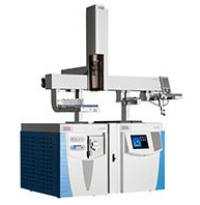 Rotavapor R 100 (Buchi), equipped with an electronic interface to control the vacuum system and the recirculating chiller.
Rotavapor R 100 (Buchi), equipped with an electronic interface to control the vacuum system and the recirculating chiller.
Gas chromatograph (Thermo Fisher, Trace 3000) coupled to mass spectrometry (MS) detector (Thermo Fisher, ISQ7000). The device is connected to an autosampler (Thermo Fisher. AI 1310) and is controlled by a Chromeleon software.
HPLC (quaternary pump, column Oven mod. LC-100 and Micro Pump Series 200, Perkin Elmer, USA) coupled to a fluorescence detector (Perkin Elmer Series 200a). The device is controlled by a Chromeleon Software.
HPLC (binary pump, Vanquish TM Core HPLC system, Thermo Scientific TM, Italy) coupled to a high-resolution mass spectrometer (Orbitrap Exploris 120, Thermo Scientific TM, Italy). The device is controlled by XcaliburSoftware (version 5.1).
Contact person: Dr.Luisa Patrolecco – luisa.patrolecco AT cnr.it
The Amundsen-Nobile Climate Change Tower (CCT) is a scientific platform dedicated to studying the thermodynamic characteristics of the atmospheric boundary layer and the exchange processes between the surface and the lower layers of the atmosphere. The structure is composed of 17 modules equipped with patch boxes to provide a power supply and data connection that ends in a dedicated hut at 40 m from the tower, where the acquisition systems are located. The CCT provides continuous profiles of meteorological parameters at four levels up to 34 m, measurements of turbulent fluxes of momentum heat and moisture at two levels as well as of radiation balance components (visible and infrared). Measurement of the characteristics of the snow layer (depth and temperature) are also provided in conjunction with the atmospheric parameters.
Due to the uniqueness of such an infrastructure in Ny-Ålesund, since 2012, the CCT and the surrounding area have become a point of reference for the integrated observation of the components of the climate system. Offering access to national and international research groups, new scientific installations have been set up. In particular for the measurement of greenhouse gases (in collaboration with KOPRI); for the measurement of the snow cover index and spectral reflectivity of the snow; for remote sensing of wind profiles with SODAR and WindLIDAR (in collaboration with KOPRI); to study processes in the active layer, the vegetation, the snow cover and the permafrost temperature profiles.
 Ministero dell'Universita e Ricerca
Ministero dell'Universita e Ricerca
Programma Ricerche Artico
Programma Nazionale di Ricerca in Antartide
 Ministero degli Affari Esteri e della Cooperazione Internazionale
Ministero degli Affari Esteri e della Cooperazione Internazionale
L'Italia e l’Artico
L’Italia e l’Antartide
CNR-ISP
National Research Council
Institute of Polar Sciences
c/o Scientific Campus - Ca' Foscari University Venice - Via Torino, 155 - 30172 VENEZIA MESTRE (VE)
Phone: +39 041 2348547 - E-mail: protocollo.isp AT pec.cnr.it
Fax: +39 041 2348 549 - Codice Fiscale: 80054330586 - P.I.:02118311006
Unless otherwise indicated, the content of this site is licensed : Attribution Non Commercial Share Alike 4.0 International (CC BY-NC-SA 4.0)
Privacy policy e Cookie policy - Transparent administration (CNR)
